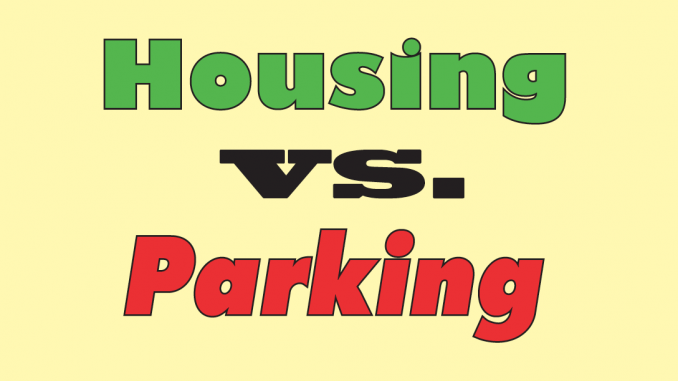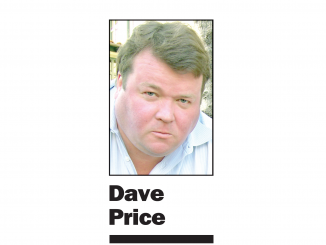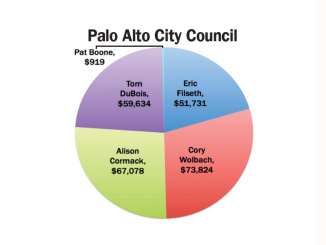
Clarification: This story has been updated to explain that Councilwoman Lydia Kou referred to the former Los Altos Water Treatment Plant site at the east end of San Antonio Road as a possible site for an RV park with bathroom facilities. The earlier version left the incorrect impression that she was talking about the Palo Alto’s Regional Water Quality Control Plant site on Embarcadero Road.
BY ELAINE GOODMAN
Daily Post Correspondent
Reducing parking requirements is one way to encourage the development of new housing, but some Palo Alto council members want to make sure such incentives don’t go too far and add to parking problems in neighborhoods.
The subject came up during the council’s discussion Feb. 21 of a new housing “work plan,” aimed at increasing the city’s housing supply by about 300 units per year.
The plan includes a wide range of initiatives that the city will try to tackle in 2018 and 2019.
One item in the plan calls for exploring a reduction in residential parking requirements for projects that provide effective transportation demand management, or TDM, measures, as well as “car light” housing, in which residents are offered incentives to use transportation other than driving alone in their cars. Councilman Greg Scharff said that even with such programs in place, the city needs to provide the right amount of parking — not too much and not too little. He said he’s “not OK” with building too little parking and having parked cars spill out into the neighborhood.
“Car light housing means that you have a strong TDM program and people won’t have cars and therefore they won’t need parking, and you’ll have the right amount of parking,” Scharff said. “What it can’t mean … is that we build a project where we say people aren’t going to have cars, (and then) they have tons of cars and we underpark it.”
A TDM with teeth
Councilwoman Lydia Kou also had concerns about projects that rely on TDM programs, saying there must be standards for the programs and a method of enforcement to ensure projects are meeting the standards.
“I want to make sure that we have a TDM with teeth,” Kou said.
The council ultimately approved the two-year housing work plan on a unanimous vote. But the three-hour discussion leading up to the final vote included plenty of disagreement.
Councilwoman Karen Holman suggested that the city host a community outreach meeting to present the ordinance that will be developed to encourage new housing. Some council members initially balked at the idea, saying residents would have a chance to comment on the initiatives during meetings of the City Council and Planning and Transportation Commission.
“If we really do want to see some of these housing changes enacted, and if we are genuine about our goal of reaching around 300 units per year, does the typical Palo Alto process serve that?” Councilman Adrian Fine said. “I would put forth, maybe not.”
Housing over parking lots
Another area of disagreement was a proposal included in a draft version of the housing plan to “explore the opportunity for developing housing over parking on city-owned downtown parking lots.”
“I can’t really think of a better use for a parking lot than keeping it as parking lot and adding housing to it, especially if it’s affordable housing,” said Councilman Cory Wolbach.
But others said the city-owned land might be needed for another purpose someday, such as a park or community center. Scharff noted that the city’s new public safety building is being built on a parking lot.
The council voted 6-3 to remove from the housing plan the proposal to look at building housing over city owned parking lots. Mayor Liz Kniss and council members Fine and Wolbach opposed.
Some council members noted that the housing work plan did little to address the problem of homelessness in the city and people living in their cars or recreational vehicles.
Kou proposed adding to the work plan an exploration of creating an RV park with bathroom facilities at the former Los Altos Water Treatment site at the east end of San Antonio Road near the Baylands. The city of Palo Alto owns the treatment plant site.
“If we’re exploring housing, I think that we should be exploring housing for everybody that is here,” she said. “We should be also looking at the RV folks, who are parked all over the place, and explore it. I’m just asking for exploration.”
But Kou’s idea drew support from only two other council members, Holman and Tom DuBois, and wasn’t added to the housing plan. Kniss suggested that council members interested in an RV park bring the idea back to the full council in the form of a “colleagues memo” for further discussion in the future.




El Camino and other “transit rich” areas are going to look horrendous when state Sen. Weiner gets finished. Cities need to keep their control over the zoning process. If that means fighting the state in court, so be it. Deciding how our town looks should be a decision made here, not in Sacramento.
If this passes, it will be a big loss for affordability. Builders will use SB827 to put up luxury condo complexes, not affordable housing. Building without guidelines hasn’t historically created affordable housing.